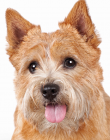Norwich Terrier
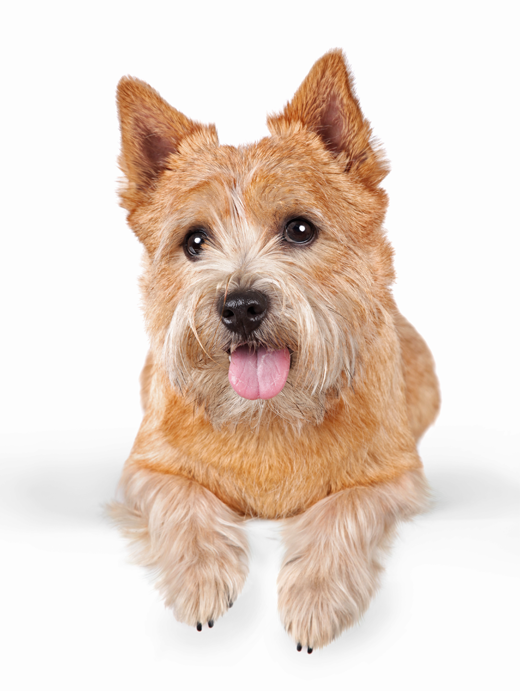
In my own words
At one point in my history of kind they couldn’t decide on our exact name or exactly how we came about and from what types of terrier. All I know is there was a bit of Bedlington, a small experiment with a Staffordshire bull terrier and a small Irish terrier somewhere down the line. At one point we were the pointy eared and the floppy eared terrier until the Kennel Club registered us as two different types of terrier from the East Anglian region of the UK. My cousins, the Norfolk terrier are very similar in size, appearance and personality. We both love our families; we both adore chasing and digging and are real little hunters at heart. I’m a ball of energy, only completely content when I have a real job to do and to be able to come home to the warmth and love of a good family.
My ideal owner(s)
Families
Active Owners
Apartments
Elderly owners
What they say about me
Happy
Fearless
Playful
Sturdy
Curious
Energetic
Adaptable
Is this Norwich Terrier for you?
Test your knowledge about the Norwich Terrier
Information essential about the Norwich Terrier
Breed Group: Terrier Group
SIZE
Male: Height: 10-12 inch, Weight: 12 pounds
Female: Height: 9-10 inch, Weight: 10-12 pounds
Popularity:
Short-legged ratting terriers have long been valued in England, but only in the 1880s did the breed that would eventually become both the Norwich and Norfolk terriers emerge. At that time, owning one of these small ratters became a fad among Cambridge University students. The AKC recognized the breed in 1936. At that time the breed had both prick and drop ears, but in 1979 the dropped-eared variety was recognized as a separate breed, the Norfolk terrier. Despite its show ring success, however, it enjoys only moderate popularity as a pet.
Breed History:
Present day Norwich Terriers began life as a show breed in 1932 when, as the drop and prick-eared Norwich terrier, the breed was accepted on The Kennel Club Breed Register, but it is interesting to look at the breed's possible evolution. Historically, small terrier-type dogs were popular amongst the farming and sporting community in East Anglia to use on rats and other vermin which infested the marshy region. It is possible that some of these were the forerunners of the early Norwich terrier. Many types of terriers were bred in the process resulting in the Norwich terrier including a small Irish terrier, a Bedlington terrier to a Staffordshire bull terrier a one point. The little terriers became known as CanTab, and later Trumpington, terriers. Around 1900, a Trumpington terrier named Rags came to a stable near Norwich and gained notoriety as a ratter as well as sire. He sired countless offspring and is the patriarch of the modern Norwich. One of his sons came to America and proved to be an amiable ambassador for the breed. To this day, many people still refer to the Norwich as the "Jones" terrier, after this dog's owner. The Jones terrier was incorporated into various foxhound hunt packs. Although lacking the flash of its long-legged competitors in the terrier group, the Norwich has proven itself as formidable a competitor in the show ring as it ever was in the field.
Character:
The Norwich terrier is a courageous, loving companion, being one of the smallest of working terriers they are ideal for small living conditions and travel, yet they are study and lead active lives. They are by far not as quarrelsome as some of the other terrier types and can live quite harmoniously. The Norwich is a classic terrier breed: fearless, strong, sassy, loving and independent. They make excellent family dogs as they consider their family to be their “pack” and will want to be included in as many group activities as possible. They never tire of playing ball, and many owners report that their Norwich Terriers chased balls with the vigor of a puppy well into their older adult lifetimes. This breed has a zest for life, approaching new tasks and situations with vigor, and makes an excellent family pet, though they shouldn't be raised alongside toddlers. Their trainability and generally even temperament makes them a good choice for first time dog owners.
Temperament:
The Norwich terrier is known for his affectionate nature. He generally loves everyone and will do well in households with multiple pets and children. His sensitive intelligence and alert nature ensure that he'll bark an alarm if he spots anything or anyone suspicious near his home. Norwich Terriers have a mind of their own, but they generally enjoy life and enjoy pleasing both themselves and their owners. They are small, but that doesn't mean you should overindulge or coddle them. That simply leads to behavior problems. The Norwich is active and loves playing with balls and toys or just playing a good game with the people he loves. He thrives on the companionship of humans and will fit himself into your life completely.
You can see the drive of the Norwich terrier in his day-to-day life: chasing squirrels and other rodents, bolting out doors and gates if unrestrained, and digging and barking for entertainment. These terrier habits can make him unsuited for the person or family who can't ensure these behaviors don't become a nuisance. On the plus side, he's loyal and alert, qualities that make him an excellent watchdog. They are courageous, but they should never be aggressive. The breed is known for its loving and well-balanced nature and thrives on the companionship of the humans it loves. The Norwich terrier, like many terriers, enjoys digging but bear in mind it's easier to train a dog to dig in a specific area then it is to break him of his digging habit.
Though they are less yappy than other terrier breeds, Norwich Terriers are still prone to barking, especially if left alone for long periods of time with nothing to do. Walking your dog before leaving the house, and leaving him with interesting toys to play with can cut down on the barking. Companion dogs also help. They are pack animals and when raised together, bond well with other canines.
Conformation:
Farmers, hunters and families alike value the Norwich’s gameness, loyalty, adaptability and great charm. Norwich Terriers were bred to hunt in packs or alone as ratters. They go to ground readily to seek and bolt their prey. Today, the Norwich remains more sociable and agreeable than many terrier breeds, although it retains its feistiness and “full of itself” attitude. Norwich Terriers make gregarious, happy-go-lucky companions for adults, children and other domestic animals, although they can be bossy. Norwich Terriers also tend to be “barky,” love to dig and can be difficult to housebreak. This spirited dog, one of the smallest of the working terriers, is sturdy and stocky, of square proportion. Its small size is an asset when following vermin or fox down tight passageways. Its teeth are large, to aid in dispatching its quarry. It shows great power in its movement. The Norwich terrier is one of the smallest of all the terriers, but what he lacks in size, he makes up for in personality and drive. This active terrier is a wonderful companion for an active individual or family. His name gives you a clue to his appearance and helps you tell him apart from his sibling, the Norfolk Terrier: remember that the Norwich has prick ears that stand up like a witch's hat. Because of his terrier standards barking can occur and is often an indicator that your Norwich Terrier sees something suspicious, is bored, or hasn't had his exercise needs met. The breed is not known for being overly yappy but there are exceptions to every rule and every Norwich terrier will bark if the above occurs.
Colour:
Red, Tan, Grizzle, Black & Tan, Wheaten
Training:
Norwich Terriers can be difficult to housetrain and although they're eager to please, training can be difficult when not properly motivated. Be patient, stick to a regular schedule, reward them with praise and treats when they potty outdoors, and crate them when you can't supervise them indoors. He is intelligent and is happiest when they have a job to do, make training interesting rather than repetitive to keep them engaged and interested in learning.
Care:
The Norwich needs to stretch its legs with a good walk or short run every day. It especially likes combining a run with a chance to explore, but any such off-leash expeditions must be done only in a safe area. It is better suited as a housedog with yard access, but it can stay outdoors during the day if need be in temperate to warm climates. Norwich Terriers can live in apartments if they're given plenty of exercise (of course this can be said of most dogs). Its wiry coat needs combing one to two times weekly, plus stripping of dead hairs three to four times a year. The Norwich is a rare and therefore expensive breed. Like all breeds, Norwich Terriers shed, though not as much as some. Brush them weekly to remove dead hair. Regular brushing will keep your Norwich clean. He won't need frequent baths unless he rolls in something stinky. Other grooming needs include dental hygiene and nail care. Brush your Norwich's teeth at least two or three times a week to remove tartar buildup and the bacteria that lurk inside it. Daily brushing is even better if you want to prevent gum disease and bad breath. Small breeds such as the Norwich are especially prone to severe gingivitis.
The Norwich terrier has a life span of between 11-14 years.
Health:
Norwich Terriers are generally healthy, but like all breeds, they're prone to certain health conditions. Not all Norwich Terriers will get any or all of these diseases, but it's important to be aware of them if you're considering this breed. The Norwich can be prone to developing a tracheal collapse, which can be seen often in smaller breeds, and the signs are coughing and fainting. Epilepsy and also an elongated soft palate can be found in the terriers, which are based in the roof of the mouth and can often obstruct the airway and cause breathing difficulties.
Other such concerns that are less common are things such as cataracts and canine deafness.
You may also like:
If you like Norwich Terriers, you may be interested in breeds of the same size »


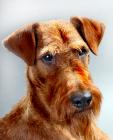
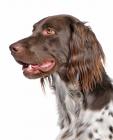

If you like Norwich Terriers, you may like other breeds with similar characteristics »

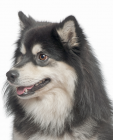

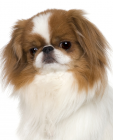
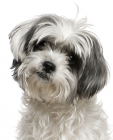
If you like Norwich Terriers, you may be interested in these other terrier dogs »

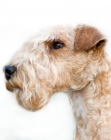

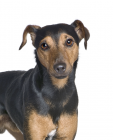

Advice on choosing your breed »
Find an animal shelter or rescue home where a Norwich Terrier is waiting for a new home »
The Norwich terrier is a ball of energy that needs daily exercise. A playful type that was once bred to hunt, and shows those instincts to chase small prey as most terriers do. Although they are good with other household pets, caution should be taken with small animals. They must be well trained and good at recall to be allowed of the lead due to their strong desire to hunt and will follow a scent. But thankfully they are highly intelligent and relatively easy to train, but will require consistent rules. If you can cope with his high prey drive and tendencies to bark and dig, the Norwich terrier is a wonderful companion and friend who may surprise you with his versatility and athleticism.
Be the first to rate this breed »
|
*PLEASE NOTE: All our breed profiles are general, and all dogs are individuals. Always talk to the breeders and meet the owners you are buying from. Try to meet the dog and its parents if it is a puppy in their home environment.








